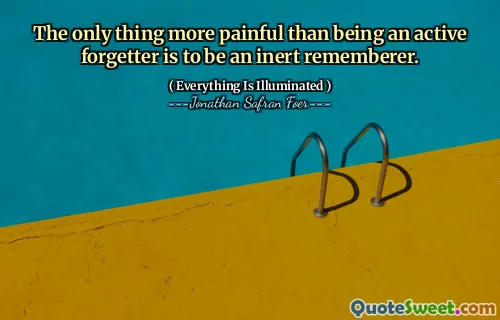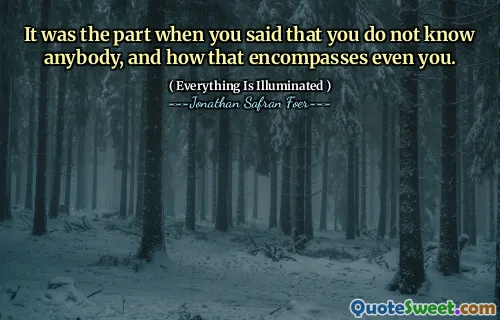You will remember when a bird crashed through the window and fell to the floor. You will remember, those of you who were there, how it jerked its wings before dying, and left a spot of blood on the floor after it was removed. But who among you was first to notice the negative bird it left in the window? Who first saw the shadow that the bird left behind, the shadow that drew blood from any finger that dared to trace it, the shadow that was better proof of the bird's existence than the bird ever was?
In Jonathan Safran Foer's "Everything Is Illuminated," a powerful image is presented of a bird crashing through a window, its struggle depicted through the vivid description of its bloodstained presence on the floor. The narrative invites those who witnessed the event to remember the tragedy not just for the bird itself, but for the impression it left behind. This moment encourages reflection on the often overlooked remnants of significant experiences.
The focus then shifts to the notion of memory and the shadows it casts. The question arises: who was attuned to the subtle aftermath of such an event? The shadow left by the bird, which can metaphorically draw blood from anyone who acknowledges it, emphasizes that sometimes the traces of a moment can hold more weight than the moment itself. This reflection on perception and legacy highlights the profound impact of memory on our understanding of existence.







